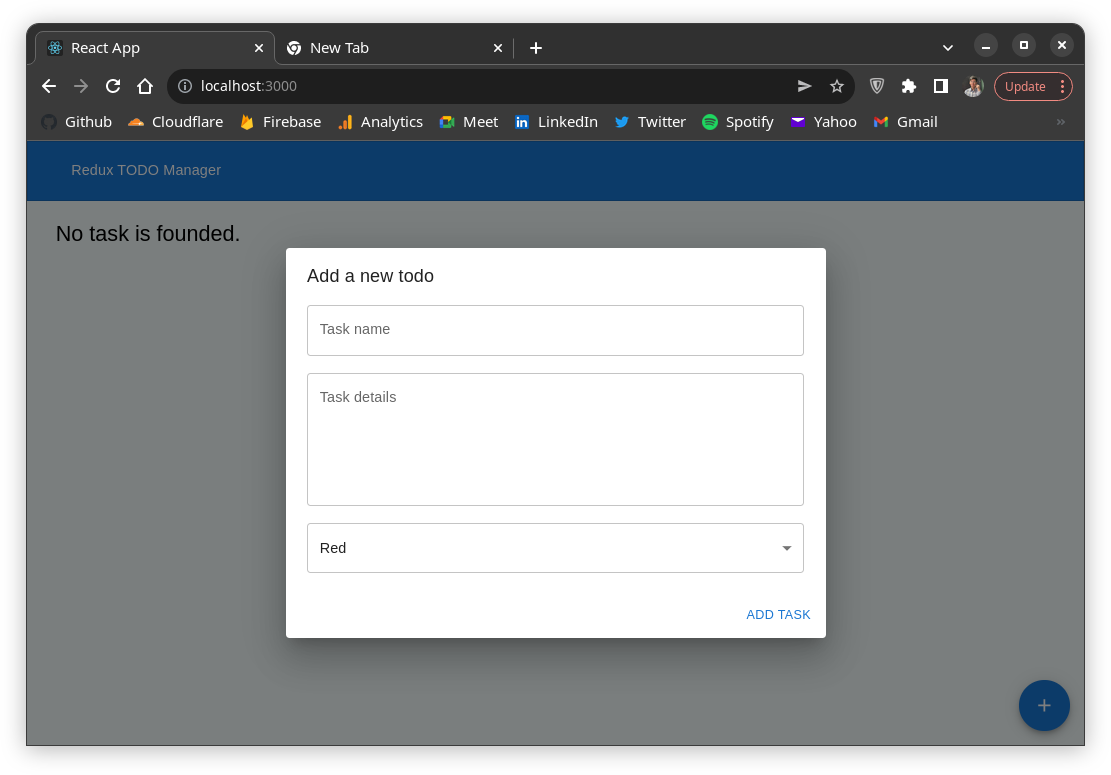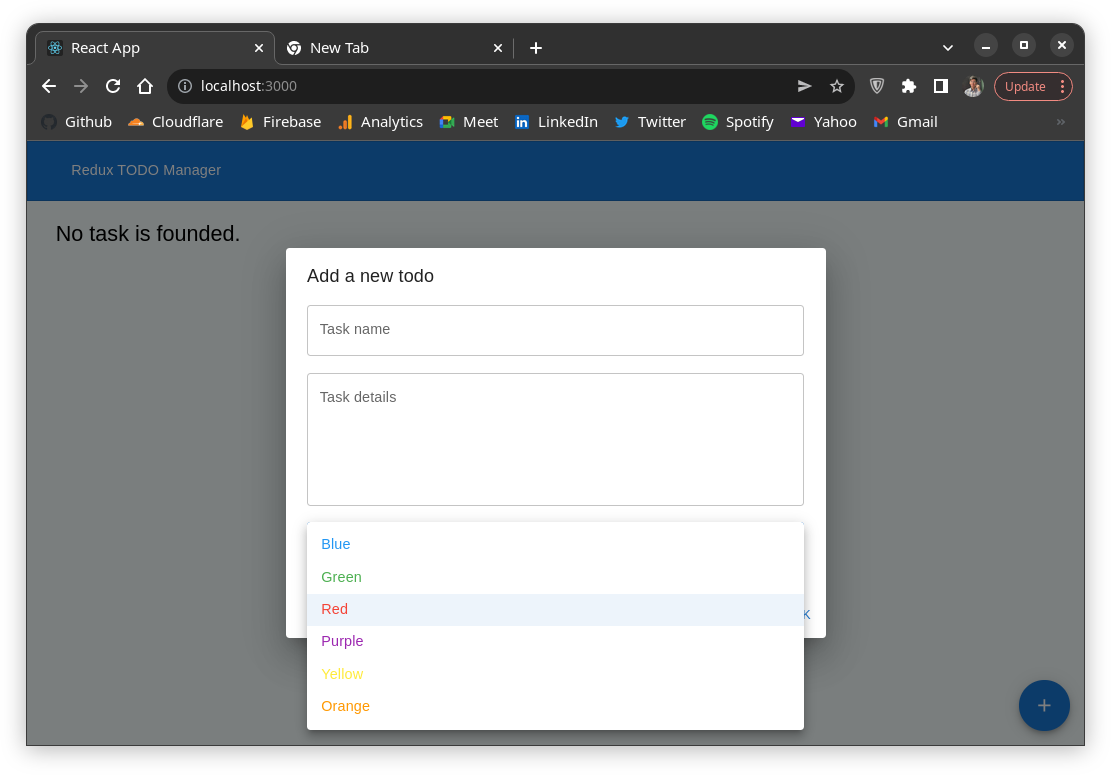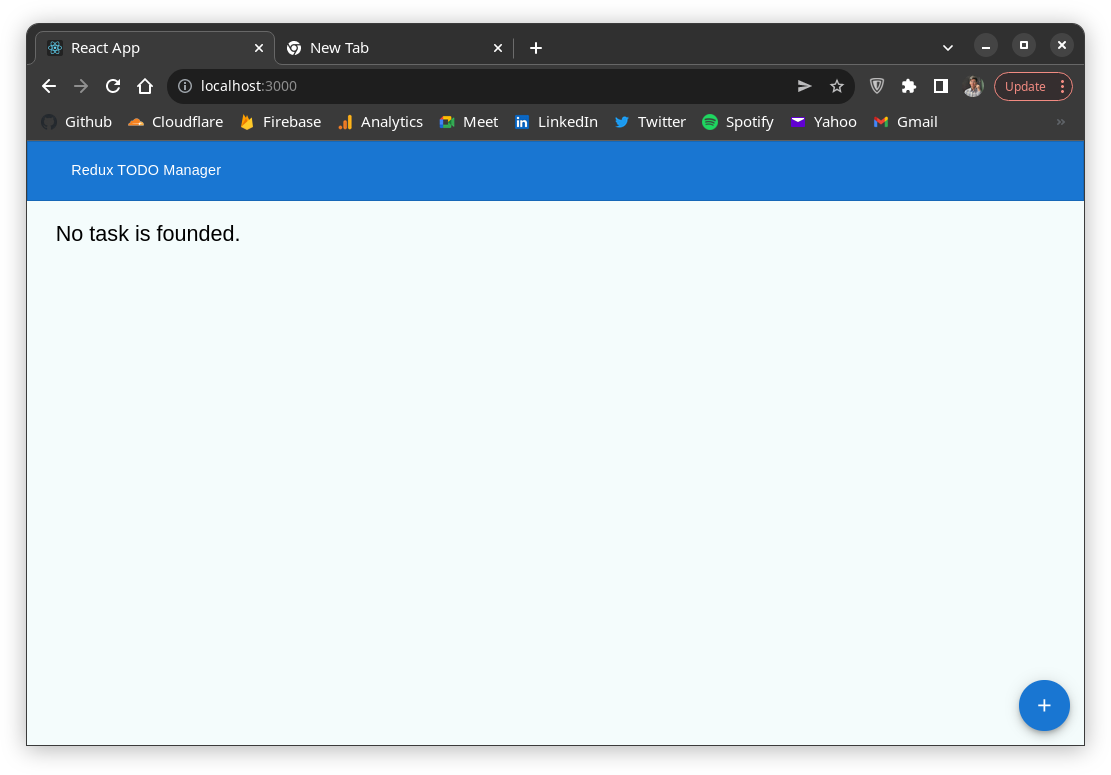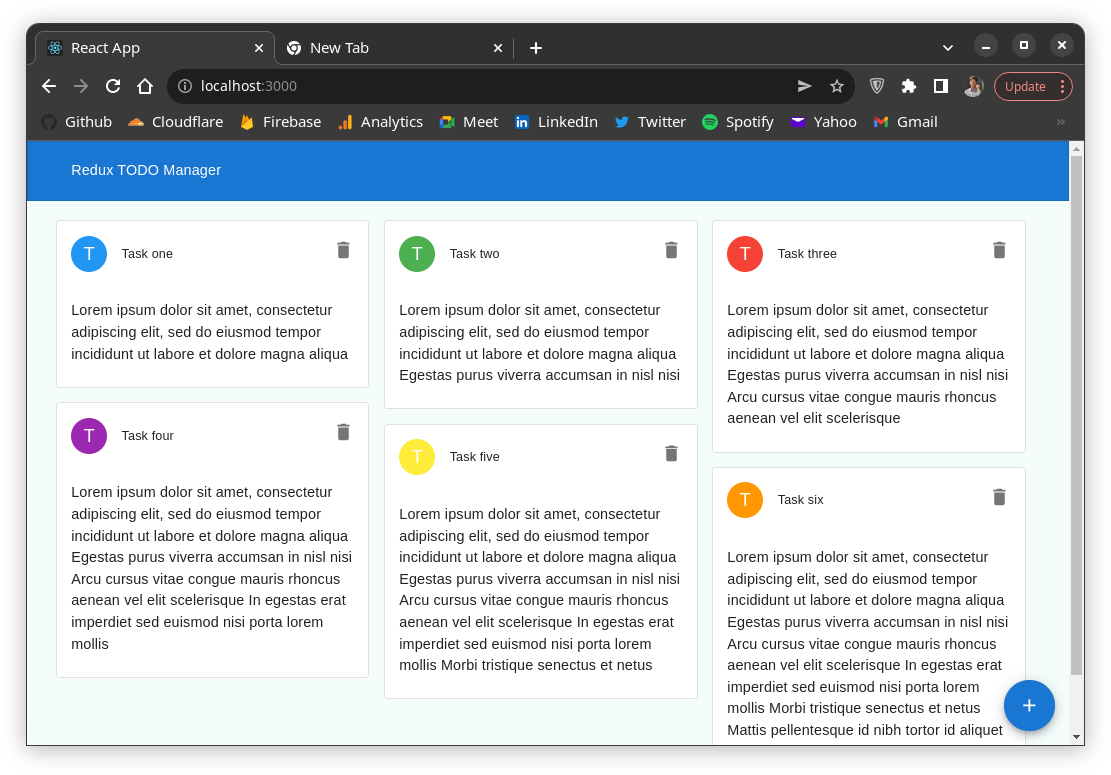React + Redux course
In this course you learn how to use Redux as a state manager in your React applications.
With Redux you can access your data easily and save them. In this project I used Material UI. If you want to learn about MUI, I have a small project you can check this out here.
Redux
So, Redux is a state manager you can use with React, Vue and even Vanilla. Redux has 4 important thingg.
- Reducers
- Actions
- Store
Reducers
Reducers are functions that take the current state and an action as arguments, and return a new state result. In other words, (state, action) => newState.
Creating a reducer is as simple as you can see down below:
// src/redux/reducers/todo.js
const todoReducer = (state = [], action) => {
switch (action.type) {
case "ADD_TODO":
return state.concat(action.payload);
case "DELETE_TODO":
return state.filter(data => data !== action.payload);
default:
return state;
}
}When we have several reducers, we need to combine them in a variable.
Create an index file in src/redux/reducers. Now combine all reducers:
// src/redux/reducers/index.js
import { combineReducers } from "redux";
const allReducers = combineReducers({
todo: todoReducer,
});Actions
Actions are plain JavaScript objects that have a type field. As mentioned earlier, you can think of an action as an event that describes something that happened in the application.
To create an action, create actions directory inside redux directory. I added all actions in index.js. You can store actions in their files.
export const addTodo = (todo) => {
return {
type: "ADD_TODO",
payload: todo,
};
}
export const deleteTodo = (todo) => {
return {
type: "DELETE_TODO",
payload: todo,
};
}Store
The Redux store brings together the state, actions, and reducers that make up your app. The store has several responsibilities:
- Holds the current application state inside
- Allows access to the current state via store.getState();
- Allows state to be updated via store.dispatch(action);
- Registers listener callbacks via store.subscribe(listener);
- Handles unregistering of listeners via the unsubscribe function returned by store.subscribe(listener).
Where to create or store? open index.js that is in src.
import { createStore } from "redux";
import allReducers from './redux/reducers';
let store = createStore(allReducers);So, now we have the store that is created. How to provide this store inside the whole app. We use Provider.
import { createStore } from "redux";
// Import Provider
import { Provider } from 'react-redux';
import allReducers from './redux/reducers';
let store = createStore(allReducers);
const root = ReactDOM.createRoot(document.getElementById('root'));
root.render(
// Add provider with store as prop
<Provider store={store}>
<App/>
</Provider>
);Done! You now had set up Redux.
Local Storage
When you setup Redux, it will only store the data until you don't refresh the app. When you refresh the app or open it in another tab, the data will be start over.
So, what should you do? The best way is to store data in localstorage. But, how to do it?
Follow these steps:
- Create storage directory in redux directory
- Add load and save functions
- Integrate localstorage in redux
I imagine you created the localstorage file in storage directory inside redux and start from second step.
Create state name
You add a key variable to use for entire file.
const key = 'redux';Add load function
export const loadState = () => {
try {
const serializedState = localStorage.getItem(key);
if (serializedState === null) {
return undefined;
}
return JSON.parse(serializedState);
} catch (error) {
return undefined;
}
};Add save function
export const saveState = (state) => {
try {
const serializedState = JSON.stringify(state);
localStorage.setItem(key, serializedState);
} catch (error) {
// die
}
};Integrate with Redux
Open index.js in src.
Now import them:
import { loadState, saveState } from "./redux/storage/localstore";Ok, create a variable that represent data from localstorage.
const persistedState = loadState();Edit the createStore with represented data:
let store = createStore(
allReducers,
persistedState
);Last step, saving data. Now you should do something that update the state in localstorage. We will use saveState().
store.subscribe(() => saveState({
todo: store.getState().todo
}));Application
This is a very simple app. There is a Floating action button that open the add dialog like thus:
Here, you enter the name.
Also, you can select what color you want.
If your storage be empty, you will see this:
But, here are some stuff I had added.
BTW, Application is responsive :)





